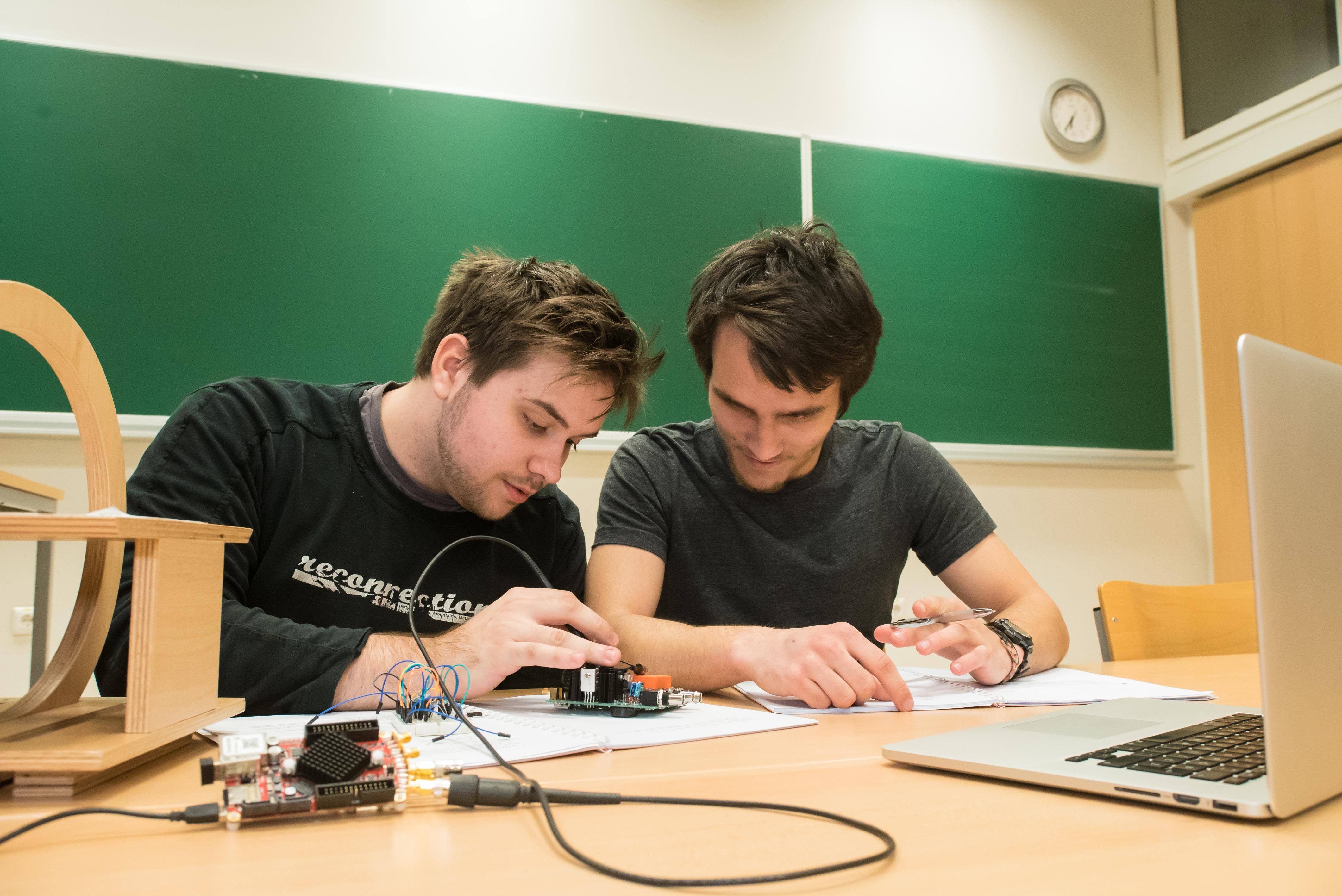Bring your lab to students, a guide for professors
-
Posted by
 Red Pitaya Team
, January 8, 2021
Red Pitaya Team
, January 8, 2021

The transition to remote learning has made it impossible to bring students to university laboratories to let them learn through experimentation and hands-on measurements of various phenomena. While Red Pitaya cannot return students back to laboratories, we can put a laboratory in their hands.
Features & applications
- Two-channel Ethernet/WIFI digital oscilloscope with voltmeter function (+-20V)
- Two-channel arbitrary function generator
- 8-channel digital logic analyzer (3.3V CMOS and 1.8V or 5V tolerant, 100MS/s)
- 16-channel digital I/O + SPI, I²C, UART and Parallel Bus Analyzer
- Two input/output digital trigger signals for linking multiple instruments (3.3V CMOS)
- Two-channel spectrum analyzer with function generator (62.5MHz)
- VNA – vector network analyzer
- Bode analyzer
- LCR meter
- SDR radio and more
- Power supply sources available through extension connector (+5V, 3V3, -4V)
- Based on a dual core ARM Cortex A9 + Xilinx Zynq 7010 FPGA system-on-chip (SoC), which features a dual core processor and FPGA logic
Red Pitaya STEMlab is an affordable and reconfigurable IoT instrument that comes with free and open-source software. Available with 10 or 14-bit ADCs and DACs running at 125 MSPS, the STEMlab enables electrical engineering students and hobbyists to explore signals and systems up to 62.5MHz. The best part is that STEMlab brings the power of high performance lab equipment in a package that can – unlike traditional lab gear – fit both your palm as well as your budget. All STEMlab boards come with pre-installed software that can be accessed from any web browser running on Linux, Windows and Mac or even tablet and phone.
Bringing the lab to the students
Connecting the STEMlab to a host device transforms it from a portable instrument to a portable laboratory. The ready-to-run software package provides an intuitive graphical web user interface similar to the lab equipment you are used to. For educators this means that you can focus on teaching instead of wasting time with set-up. Students can similarly learn faster, work smarter, and explore more. The board can be also controlled from MATLAB, LABview, and Python, while advanced users can even create their own FPGA or application code.
Engineered for learning
We designed the STEMlab with university students and self-learners interested in exploring electrical engineering from basic principles all the way to advanced applications. We have a vast collection of lessons and lab experiments available to make it as simple as possible for educators to design courses or adapt existing ones.
Where to get one?
If you want to become one of the many universities who use STEMlab for teaching visit our online store, where you will be able to find our STAY@HOME kit which we designed specifically for remote teaching. Or, if you want to try it out first, you can also request a free trial.
To better understand how product specifications differ from each other we suggest you look at the hardware specifications comparison table & supported features and apps by Red Pitaya model table.
About the Red Pitaya Team
The Red Pitaya editorial team consists of engineers, researchers, and product experts who develop and test cutting-edge open-source test & measurement solutions.
Our mission is to make advanced instrumentation accessible to everyone — from students and educators to leading research labs worldwide.



